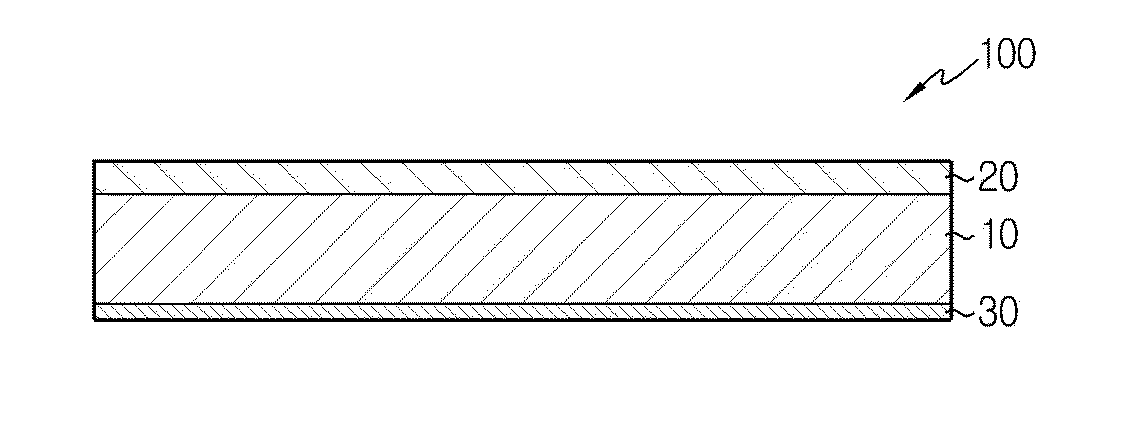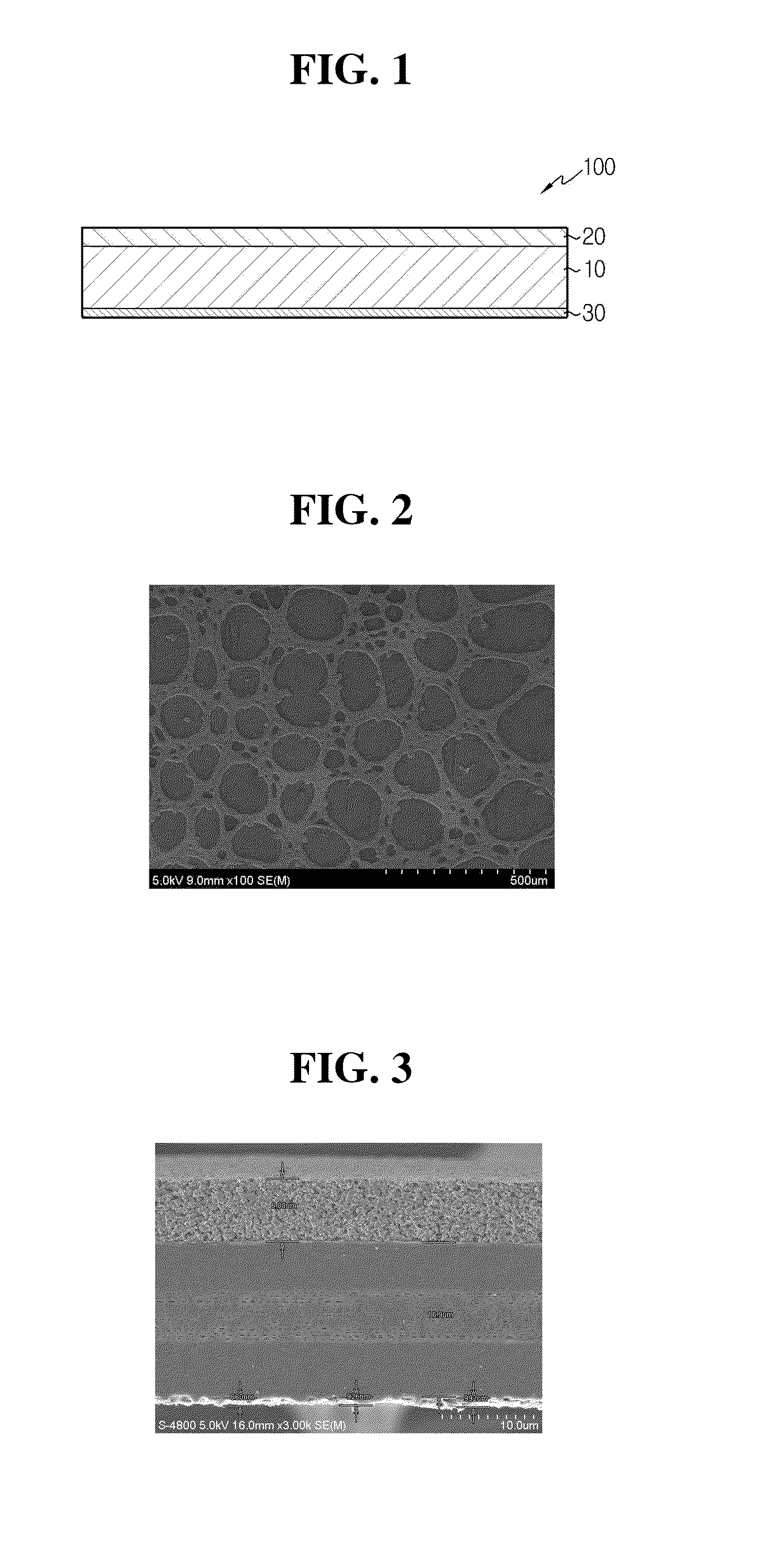Separator and electrochemical device having the same
a technology of separation device and separation electrode, which is applied in the manufacture of final product, cell component details, cell components, etc., can solve the problems of thermal runaway, complicated fabrication, safety problems of lithium ion batteries, etc., and achieves superior adhesiveness, good thermal safety, and reduced thickness
- Summary
- Abstract
- Description
- Claims
- Application Information
AI Technical Summary
Benefits of technology
Problems solved by technology
Method used
Image
Examples
example 2
Manufacture of Separator Having Porous Organic-Inorganic Coating Layer and Binder Thin Film Using Non-Solvent by way of Multi-Coating Method
[0059]The procedures of Example 1 were repeated except that on one surface of the porous substrate, the slurry was coated as a lower layer and then the first polymer solution was coated as an upper layer by way of a slide-slot coating method, to prepare a separator.
[0060]The first porous coating layer, in which an additional polymer thin film was further formed, was confirmed to have a thickness of 7.5 μm, and the second porous coating layer obtained from the second polymer solution using the non-solvent was confirmed to have a thickness of 0.9 μm. The separator prepared thus had a superior Gurley number of 780 sec / 100 cc.
experimental example 1
Observation of Separator Surface
[0062]The SEM photographs for the surface and the cross-section of the separator prepared in Example 1 are shown in FIGS. 2 and 3, respectively.
[0063]FIG. 3 is an SEM photograph of the cross-section of a separator according to a preferred embodiment of the present invention.
experimental example 2
Measurement of Battery Output
[0064]Each separator prepared in Example 1 and Comparative Example 1 was interposed between a cathode and an anode, in which the first porous coating layer was in contact with the surface of the cathode and the second porous coating layer was in contact with the anode, to prepare a stacked bi-cell. The bi-cell was again welded on the second porous coating layer, followed by folding, to prepare an electrode assembly.
[0065]Each electrode assembly was measured for discharging resistance under various states of charge (SOC). The results are shown in Table 1.
TABLE 1SOCEx. 1Com. Ex. 195%57.1 mΩ59.5 mΩ50%58.7 mΩ60.0 mΩ30%63.9 mΩ65.5 mΩ
[0066]As shown in Table 1, the electrode assembly having the separator of Example 1 exhibited a lower discharging resistance than that of Comparative Example 1.
PUM
| Property | Measurement | Unit |
|---|---|---|
| dielectric constant | aaaaa | aaaaa |
| temperature | aaaaa | aaaaa |
| thickness | aaaaa | aaaaa |
Abstract
Description
Claims
Application Information
 Login to View More
Login to View More - R&D
- Intellectual Property
- Life Sciences
- Materials
- Tech Scout
- Unparalleled Data Quality
- Higher Quality Content
- 60% Fewer Hallucinations
Browse by: Latest US Patents, China's latest patents, Technical Efficacy Thesaurus, Application Domain, Technology Topic, Popular Technical Reports.
© 2025 PatSnap. All rights reserved.Legal|Privacy policy|Modern Slavery Act Transparency Statement|Sitemap|About US| Contact US: help@patsnap.com


